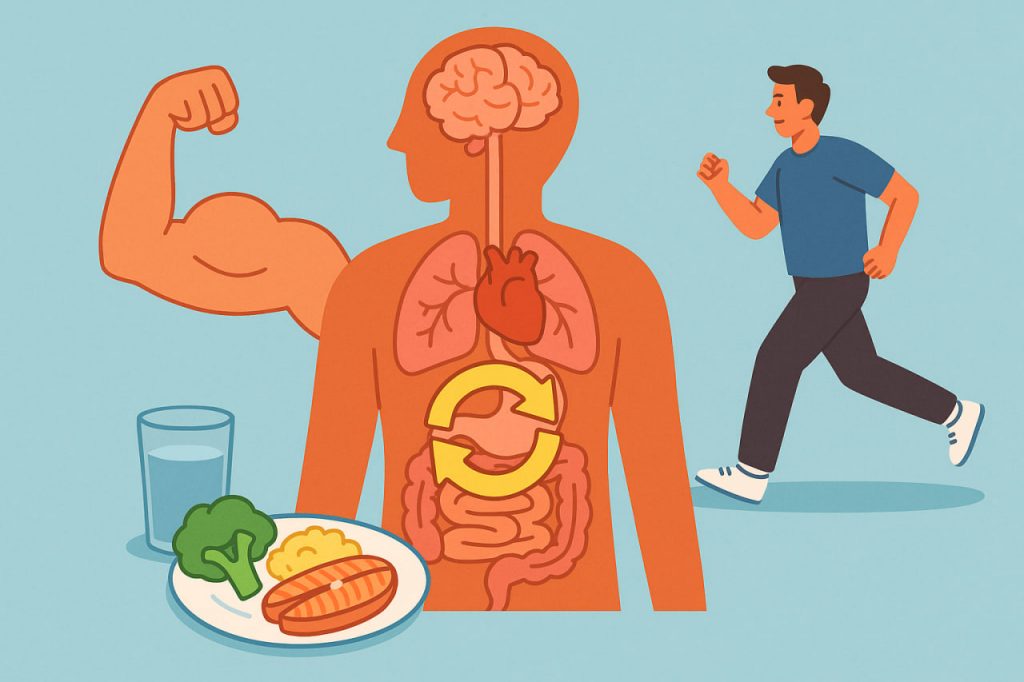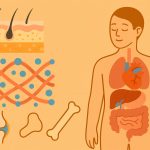Metabolism is a set of chemical processes in the body that convert food into energy to support life-sustaining functions. This includes breathing, circulation, temperature regulation, and cellular repair. The basal metabolic rate (BMR) represents the minimum energy needed to maintain these functions at rest. While metabolic rate is influenced by genetics and age, it can be modulated by various behavioral and environmental factors. Understanding how metabolism works allows individuals to make informed choices that support better energy use and long-term health.
How Metabolism Works
Metabolism consists of two main processes: catabolism, which breaks down molecules to release energy, and anabolism, which builds new tissues and stores energy. These processes are regulated by enzymes, hormones, and the endocrine system. The total metabolic rate depends on BMR, the thermic effect of food, and physical activity.
Factors that influence metabolism include muscle mass, hormonal levels (such as thyroid function), sleep, hydration, and nutritional balance. Metabolism naturally slows with age, especially with loss of muscle tissue or decreased activity. However, certain lifestyle strategies can help maintain or moderately accelerate metabolic function.
Role of Muscle in Metabolic Speed
Muscle tissue is metabolically more active than fat, meaning it consumes more energy even at rest. Therefore, increasing lean muscle mass through resistance training is one of the most effective ways to boost BMR. Weightlifting, bodyweight exercises, and functional movement patterns all contribute to muscle hypertrophy.
Maintaining muscle also helps regulate blood glucose levels, insulin sensitivity, and body composition. Inactive individuals tend to lose muscle mass over time, which reduces overall energy expenditure and leads to metabolic slowdown.
The Impact of Physical Activity
Aerobic exercise, such as walking, running, or swimming, increases energy consumption during activity. In contrast, high-intensity interval training (HIIT) and strength training continue to elevate metabolic rate even after exercise is complete, a phenomenon known as excess post-exercise oxygen consumption (EPOC).
Daily movement, even in small doses, prevents long periods of energy conservation mode triggered by sedentarism. Active lifestyles stimulate mitochondrial efficiency and increase the rate at which the body uses calories for fuel.
Thermic Effect of Food and Nutrient Balance
The thermic effect of food (TEF) refers to the energy required to digest, absorb, and process nutrients. Protein has the highest TEF, requiring more energy to process than carbohydrates or fats. Therefore, a protein-rich diet modestly increases daily energy expenditure.
In addition to macronutrient composition, regular meal timing and hydration influence metabolism. Dehydration can reduce enzymatic efficiency, while skipping meals may lead to metabolic adaptation and energy conservation.
Hormonal and Sleep Influences
Hormones such as thyroxine, insulin, leptin, and ghrelin play a major role in regulating metabolic speed and energy availability. Disruption in hormonal balance—due to stress, poor sleep, or over-restriction of calories—can suppress metabolic activity.
Chronic sleep deprivation decreases glucose tolerance and impairs mitochondrial function, reducing energy output. Therefore, adequate, consistent sleep hygiene is crucial for metabolic stability.
Conclusion
Metabolism is not fixed and can be influenced through consistent lifestyle behaviors. Strategies such as building muscle, staying physically active, optimizing protein intake, and ensuring hormonal balance all contribute to a more efficient energy system. Although no method drastically accelerates metabolism overnight, cumulative improvements lead to better long-term metabolic health and resilience.
Glossary
- Metabolism — the sum of all chemical processes that sustain life.
- Basal metabolic rate (BMR) — the number of calories the body uses at rest to maintain basic functions.
- Catabolism — the breakdown of molecules for energy.
- Anabolism — the synthesis of new molecules and tissues.
- Thermic effect of food (TEF) — the energy cost of digesting and processing food.
- EPOC (Excess Post-Exercise Oxygen Consumption) — increased calorie burn after exercise.
- Muscle hypertrophy — growth and increase of muscle cells.
- Hormonal balance — the stable interaction of hormones affecting metabolism and physiology.


